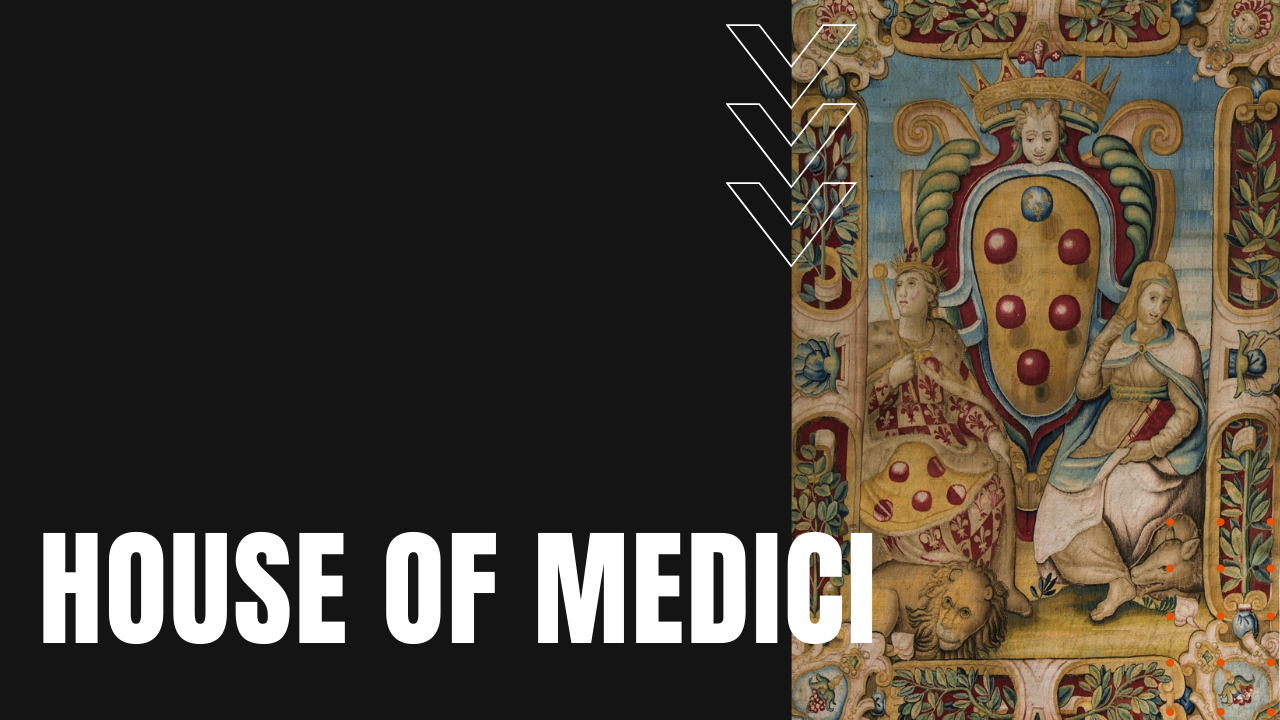House of Medici: Power, Patriarchy, Art and Exile

After the Medicis emigrated to Florence in the 12th century—rising to preeminence through banking and commerce—the family fell into decline by the 14th century, when Salvestro de’ Medici was forced into exile.
Cosimo de Medici
The dynasty made a comeback through another branch of the family, descended from Salvestro’s distant cousin Giovanni di Bicci de’ Medici—known as Cosimo the Elder—who rose to political power in 1434 to rule Florence as an uncrowned king until his death in 1464.
A wealthy and devoted patron of the arts, Cosimo supported such artists as Ghiberti, Brunelleschi and Donatello. Cosimo’s patronage of the arts would be carried on by his son and particularly his grandson, Lorenzo the Magnificent, elevating Florence into the cultural heart of Europe during the ascending years of the Renaissance.
Medici Patriarchy
A poet himself, Lorenzo’s rule ushered in the Golden Age of Florence when he supported influential artists such as Botticelli, Leonardo da Vinci and Michelangelo. After passing away at the tender age of 43, Lorenzo’s eldest son Piero rose to power in Florence, which led to the family’s second exile after he accepted a one-sided peace treaty with France.
The Medicis returned to the city in 1512, thanks to Piero’s younger brother Giovanni, who was a powerful cardinal at the time, and would later become Pope Leo the Tenth. Giovanni’s rise to power marked the high point of the Medicis influence in Europe, while continuing his father’s patronage of the humanities. Piero’s son Lorenzo also regained power in Florence, while his daughter Catherine became queen of France after marrying King Henry the 2nd. Three of Catherine’s four sons would later become kings of France.
Decline of the Medici Empire
By the early 1520s the House of Medici fell into decline, until Lorenzo the Elder launched a third Medici comeback. Lorenzo’s great-great-grandson Cosimo became the duke of Florence in 1537, followed by the grand duke of Tuscany in 1569, setting in motion a succession of Medici grand dukes that would continue into the 1700s. The last lines of the Medici family renounced the older generation’s republican sympathies, embracing a form of authoritarian rule, which brought increased stability to Florence but also led to the city’s decline as the cultural hub of Europe.
When grand duke Gian Gastone de’ Medici died without a male heir in 1737, the family dynasty ended with his passing, ushering in the long reign of the Hapsburg-Lorraine family.
